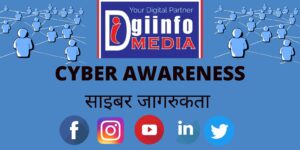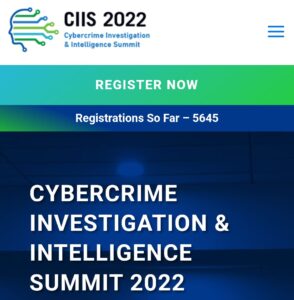
OBSCENITY
BY DIVVYANSHI GUPTA
Today we all live in a world where there is technology all around. As given in the Oxford Dictionary, the word “obscene” means “portrayal or description of sexual matters offensive or disgusting by accepted standards of morality and decency. Obscenity is all over the internet making it a very unsafe territory for its users. Obscenity is a category of pornography violating the traditional community standards that exist in India. Obscene articles, pictures, websites, etc. don’t really have an artistic, literary or political value. Pornography in India is legal and protected by the Constitution if it is for adults. But child pornography and obscenity is a very controversial topic which has had a very unclear definition over the years.
TEST FOR OBSCENITY
The Hicklin Test: In the case of Regina v. Hicklin, 1868 “The Hicklin Rule” was established. According to this test, any part of a work can be looked upon for obscenity which might be harmful for children and some adults.
Roth Test: In the case of Roth v. United States, 1957 the federal law which prohibited the mailing of any material which is “obscene, lewd, lascivious, or filthy…or other publication of indecent character” was challenged. The Court gave the opinion that “obscenity is not within the area of constitutionally protected speech or press.” Justice William J. Brennan Jr. made a test for obscenity called the Roth test. This test focuses on the theme of the material and not only certain parts of it. The material that was sex-related and would incite lustful thoughts were obscene.
OBSCENITY- AN OFFENCE UNDER THE INDIAN LEGAL SYSTEM
In the Indian Legal system, the offence of obscenity comes under:
- The Information Technology Act, 2000
- The Child Protection of Children from Sexual Offence Child Act, 2012
- Criminal Procedure Code
- Indian Penal Code
- THE INDIAN CONSTITUTION
Article 19(2) of the Indian Constitution permits legal infringement of the right to freedom of speech and expression on the basis of decency and morality. Indecent and obscene are two very similar words. The Court says that they understand any material as obscene which has ability to corrupt the minds of people.
- THE INDIAN PENAL CODE, 1860
Section 292 of the IPC defines the word “obscene” as “a book, pamphlet, paper, writing, drawing, painting, representation, figure or any other object, shall be deemed to be obscene if it is lascivious or appeals to the prurient interest or if its effect, or (where it comprises two or more distinct items) the effect of any one of its items, is, if taken as a whole, such as to tend to deprave and corrupt person, who are likely, having regard to all relevant circumstances, to read, see or hear the matter contained or embodied in it.”
The punishment for the same under this very conviction is imprisonment of either description for a term which may extend to two years, and a fine which may extend to two thousand rupees and for a second or subsequent conviction with imprisonment of either description for a term which may extend to five years, and a fine which may extend to five thousand rupees.
- INDECENT REPRESENTATION OF WOMAN (PROHIBITION) ACT, 1986
Section 4 of this Act prohibits the indecent or obscene representation of woman by using writings, paintings or publication. This is a punishable offence.
- INFORMATION TECHNOLOGY ACT, 2000
According to this Act, storing or viewing of obscene material privately is legal but publishing or transmitting the obscene material is illegal. Section 67A of the IT Act,2000 specifically restricts the publication of sexually explicit material and section 67B of the Act prohibits child pornography.
CASE LAWS:
AVINASH BAJAJ V. STATE (NCT) OF DELHI ((2005) 3 CompLJ365Del.)
A person put up an obscene material(clips) up for sale on a website. These clips were brought by a lot of people. The website was questioned for uploading obscene content over the internet. The issue was that there was transmission as well as publishing of the obscene material on the website or not? The website was liable under section 67 of the IT Act, 2000 for the same.
- A. ABBAS V. UNION OF INDIA AND ANR (AIR 1971 SC 51)
This case was based on pre censorship of content. The petitioner was given an ‘A’ certificate for his movie. He filed a complaint and was given a ‘U’ certificate with some cuts to the movie. He challenged the decision saying that there was a violation of his right to freedom of speech and expression. The Court observed that the censors must look into the value of the art while making any decisions. Further the petitioner was given a ‘U’ certificate without any cuts.
RECENT CASES INVOLVING OBSCENITY:
(TIMES OF INDIA, UTTARAKHAND, JANUARY 18,2020) A 35 year old man was arrested in Haridwar who was secretly shooting obscene videos of two tenant girls while they were bathing.
(TIMES OF INDIA, MUMBAI, JANUARY 22, 2020) The Civic Education Department suspended a teacher from a BC school in Bandra who was sharing obscene content with his colleagues on a WhatsApp group.
(TIMES OF INDIA, PUNE, FEBRUARY 24, 2020) A 23-year old man was showing a woman porn clips on his phone and was making obscene gestures.
CONCLUSION
There are more and more number of cases of obscenity surfacing in India. This is an issue of great concern. Even when it is a punishable offence, there are a lot of people committing it. It is a social evil which has corrupted he minds of all. More awareness needs to be created so that no man or woman is ever subjected to shame due to obscene acts of others.





It is well written and have a good flow in it but more information should be provided like which sections talk about obscenity and its punishment under different acts.
The effective work done under this article is appreciable as to find out the specific issue and than providing related provisions makes it a very good article as the relevancy to the Constitution of India and other laws make it effective.
Good article to read. Effective information is provided
The Article is very adequate and the Judiciary should take strict and immediate action against it.
Very knowledgeable and important article for all people
Not Bad at all. But one can get more information from google search.
Again, as I had mentioned in another article on obscenity, the term is very vague. There is a fine line between what is considered art and what is obscene and it’s only at an individual level that one interpretation can work.
The Article focuses on the aspect of the law regarding obscenity, but the correctness or the applicability of this law should be under question. As stated by Sayantani Rakshit the interpretation of the law varies with different individual and one must note, what does one consider to be obscene and what does the community consider to be obscene which are factors that must be taken in consideration while reviewing this law.
Lastly, making obscenity seem shameful or a topic of societal shame would deter efforts made by victims of obscenity. Promotion of shame in this regard must not take place and awareness campaigns about such acts must be undertaken at a regional level.
This article is very important for today’s generation.
The Article throws light on the neglected or the easy taken part of the internet. This is something to be concerned about. Correctly said that ” lot of people using it”, Yes because of the lack of awareness.
The article is greate but in case of involving law you need to be more precise.
Really good article it really help me to understand things easily
The Article focuses on the aspect of the law regarding obscenity, but the correctness or the applicability of this law should be under question. As stated by Sayantani Rakshit the interpretation of the law varies with different individual and one must note, what does one consider to be obscene and what does the community consider to be obscene which are factors that must be taken in consideration while reviewing this law.
Lastly, making obscenity seem shameful or a topic of societal shame would deter efforts made by victims of obscenity. Promotion of shame in this regard must not take place and awareness campaigns about such acts must be undertaken at a regional level.
It is indeed a very informative and a very well written article. The Learned writer has very nicely cited case laws and the laws which deal with Obscenity in India. I liked how the writer has elaborated on how the Constitution of India, the Indian Penal Code, the Information Technology Act and the Indecent representation of women act govern and deal with obscenity in India. It is true, that a lot of cases dealing with obscenity have severely risen in India, and this article however, does not exactly throw light upon the recent events that have taken place, like, for instance, the boys locker room case. It is unimaginable as to how school going kids imbibe such thoughts in their minds and even decide to talk obscenely about women and girls. I believe, the writer should have thrown some light upon the same. But, all in all, the article is worth a read.
The article did cover basic laws which most of us didn’t know , neither put in efforts to look up for , but it could have been proof read once and also should’ve been a little more understandable
This article is quite informative about the serious issue concerning obscenity. It mentions the two tests and also about the legislations in the Indian legal system which deals with this issue. This issue is of great concern because it is a kind of mental harassment that should be avoided. The cases as boys’ locker rooms are inconvenient for our society and needed to be addressed.
A very well written and well structured article. the best article i have read till now. It briefly mentions various case laws, statute, tests of Obscenity and provisions dealing with Obscenity in India. it also taken into account the recent cases. It is appreciating how the author has shown obscenity under the light of Constitution of India and connected it with concepts like decency and morality.
This is piece of writing which should be appreciated as the same has brought a serious concern to the serious issue of obscenity as the one dealt under Indian Legal System. The article enlightens the readers about obscenity dealt under cyber crimes. Obscenity dealt here is under IPC, IT ACT, 2000, INDIAN CONSTITUTION, etc. Obscenity is not only limited to this particular area but at last also has to do a lot with people living in society, the ethics and values in society. Not even obscenity but there are many such offences may be in light or hidden happen in our surroundings from day to day, may they be with anyone. The cases dealt add star to the article for better interpretation.The article at the end note brings a lot of awareness to the readers……
Very Well Explain About The Law..What Extatct things Happen There..Thanks For Your Effort.
This article clearly defines the meaning of obscenity. And also give the information of provisions under the Indian law regarding obscenity.
While publication of obscene content without permission of the person in it, done by intension, should be punished harshly, on the other hand, it should be seen as the society at large that many ancient temples display the art form of painting such scriptures and an example of such is Khajuraho Temple in Madhya Pradesh. The art form should be recognised as it was done by the Honarable Supreme Court in the case of A Abbas v UOI in 1971.
very well done Mam.Very interesting topic and explained to understand with ease.Also i gained new knowledge and learned new word “obscene”. Thank you mam for giving your best practices to write this articles and provide such important information.
Do you mind if I quote a few of your posts as long as I provide credit and sources back to your webpage? My blog site is in the exact same niche as yours and my visitors would really benefit from some of the information you present here. Please let me know if this okay with you. Thanks!